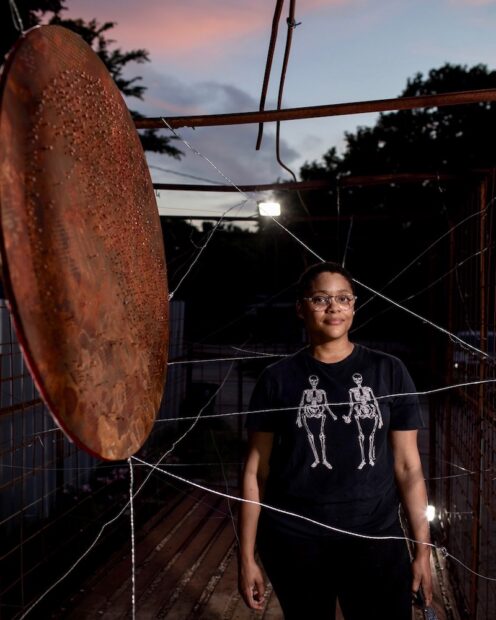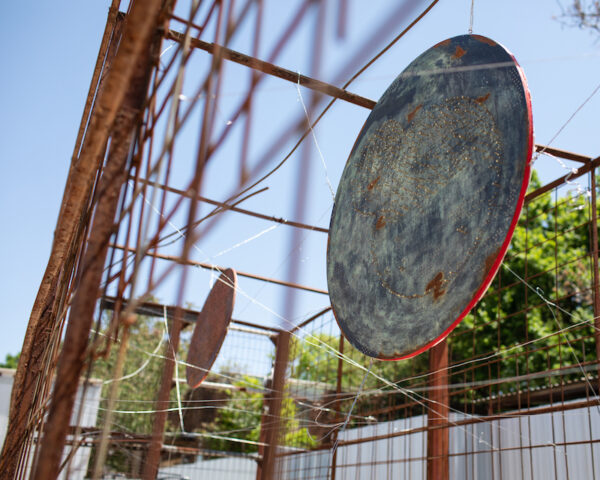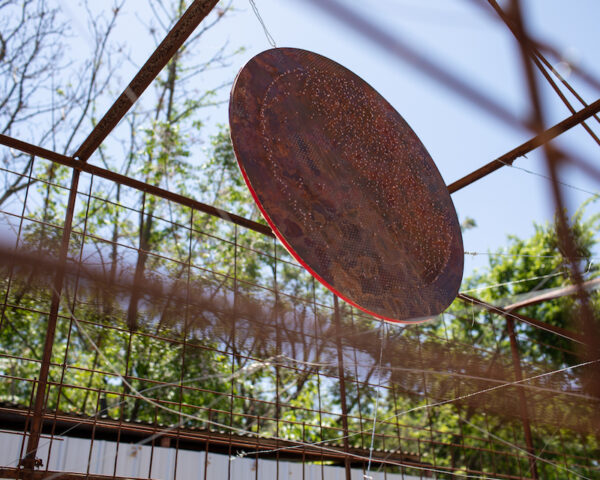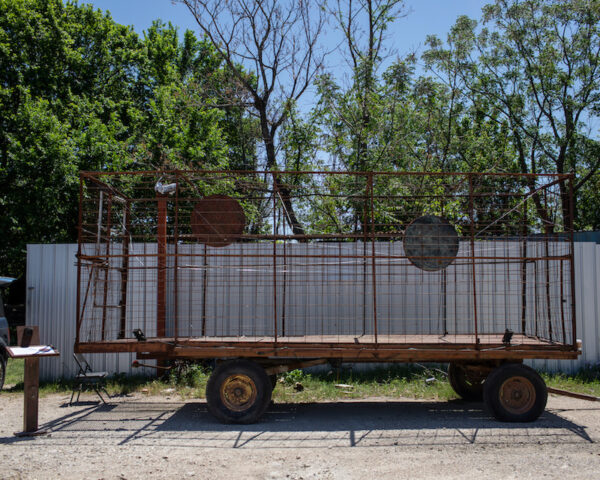For the first four installments in this series, please go here, here, and here, and here.
Since we began working together on the Bartlett Project, I have become eternally grateful for Aimée Everett’s presence, insight, and practice. This is the first time we’ve worked together, but through her practice, and her openness to listening — and I mean really listening — Aimée and I have developed a friendship that I value. Bartlett has been our connection to talk about complicated issues, and those conversations always lead back to her work, which is thoughtful, poetic, and intimately detailed.
In Bartlett she is going big. She is still using the delicate materials she often works with and treating them in the same delicate manner, but for Bartlett, she’s taking advantage of the space, and filling it. This time, it’s not only the physical space, but the metaphorical space of the things we don’t necessarily see and hear.
Our exhibition in Bartlett opens on Saturday, June 12 from 1-6pm at 221 East Clark Street, Bartlett, TX 76511. For a schedule of events and to RSVP, please go to this link.

Aimée Everett, This One Came In Three, 2020, Ferro prussiate and acrylic on Birchwood panel, 9.5”, 17”, 13.5” (Triptych)
Leslie Moody Castro: What interested you about the Bartlett Project when I approached you with it?
Aimée Everett: My practice has been growing in a way that has me wanting/yearning to make larger scale works. I’d been looking for a large building, some sort of space, that could open that door for me. So, this opportunity came at just the right time. The combination of working with the community, telling a story, and creating on a larger scale all came together in an amazing way.
LMC: Where do you think the impulse to create on a larger scale has been coming from?
AE: I don’t know; a natural progression maybe.
LMC: What were you looking forward to most at the beginning of the project?
AE: After hearing about the town and certain terms used to describe it, I was curious. I am often looking for and listening to what is not being said. So, when I heard that we would be working in a “ghost town,” I considered what that meant, how the term was — and is — being used, and if that could actually be true. I soon found it to be not true at all. I look forward to hearing stories and to learning the experiences from the Black communities in the town.
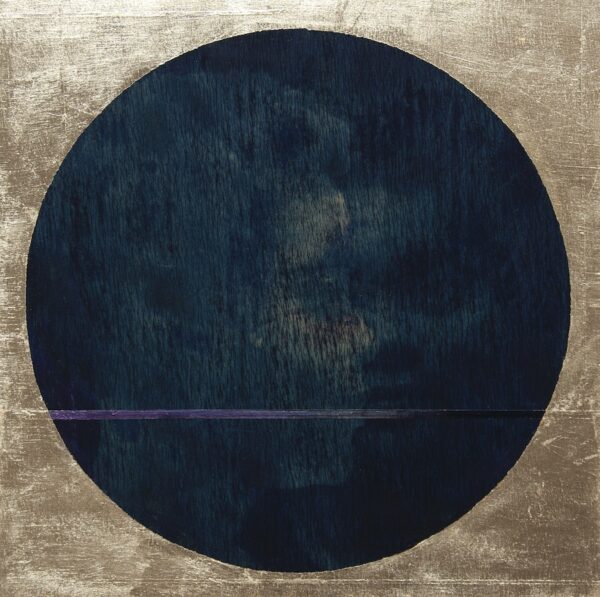
Aimée Everett, Disharmonious Illusions, Ferro Prussiate, 21k Gold leaf and acrylic on Birchwood Panel, 12”, 2020
LMC: Can you elaborate on the process of learning that Bartlett is not a ghost town?
AE: Our first group meeting in Bartlett was an indication to me that Bartlett was in fact, not a ghost town. While everyone was looking at the buildings and talking, I was listening and looking. I noticed that the BBQ restaurant across the street from our building was booming with business. Car after car, customer after customer, greeted each other as they came and went. Watching led me to question: how could this business be thriving if this was indeed a ghost town?
I went back a few times on the weekends and drove around and noticed families outside doing everyday activities (maintaining their lawns, washing their cars, hanging out, bbqing). I would also stop and talk to a few residents, try to get to know them and get their thoughts on the town. I then realized why Bartlett’s residents were painted with the brush of invisibility. Those using the term didn’t take the time to listen, look, or to speak with anyone.
It seems that comparisons of big cities were used, and since Bartlett didn’t resemble Austin, it has to be a ghost town. For some, I assume, it’s also romantic to play around with the idea of a ghost town and who/what the town’s inhabitants could have been.

Aimée Everett, This One Carried My Voice Away, 2020, Ferro prussiate and rust on Birchwood panel, 16”, 2020
LMC: What was your initial idea for the project/exhibition?
AE: I’ve been tossing around the idea of using textiles and other materials with wood. Some sort of project that included ancestral creative language, and the current creative language that I am working with.
LMC: Can you elaborate on the idea of this creative language? Both in the context of ancestral creative language, and your own?
AE: As artists, I believe we are all attempting to communicate with people, no matter the medium. That is our language, a creative language. This is not new, and to build upon how I speak to viewers, I look back at what Black people were creating before me.
I’m from New Orleans. Everything we do carries the scent of creativity from cooking, music, painting, dancing, and our colorful speech, to name a few things. My work is about listening to, and questioning the silences. They can be so loud, and many times, go without interrogation or approach because we don’t have the words to begin a conversation. My work picks up where my words fail me. My paternal Grandmother knitted blankets for my siblings and I. So through her creativity she still speaks to us. The work of quilting and knitting has often been used by Black communities to communicate with one another, and I want to explore components of that practice within my own style and creative language.
LMC: How does this compare with your past work? How did you come to these materials?
AE: I’m not sure I have the answer. I never compare my works. My creative voice is evolving due to diligence in my practice, just as a child begins to speak better over time. My work is evolving as understanding in myself grows. Just as I am speaking and questioning the viewer, the same goes for myself. The materials I choose to work with are comfortable to me. Paper, fabric, wood, paint, metal — they’re everyday materials, repurposed. A lot of repurposing happens in life, and that is a component that can seem familiar to viewers and invite them in.
LMC: What have you learned along the way?
AE: I’m learning how to listen and how to go deeper in research. I usually do research before and during a series, and this has been rewarding and fun, quite honestly.
LMC: How has the nature of your work changed through the process?
AE: The main ideas of the project have stayed the same, but also grown in a beautiful way. The space has changed the dimensions and technical aspects of my original ideas, which I am welcoming.
****
To learn more about Bartlett, please follow @downtownbartlett. For more on ICOSA Collective, follow @icosa_art. For information about the artists, follow: @aimeemeverettart, @laursen_art, @jadewalker_studio, @mjmenjivar, @LeslieMoodyCastro.
Next installment: Two weeks. Also, hope to see you in Bartlett this Saturday!


